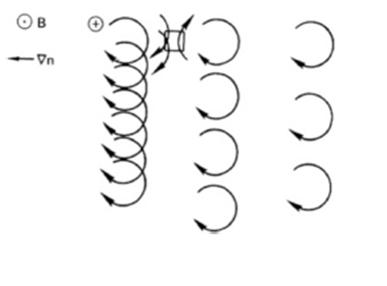
Week 9-10: Fluid description of plasma, Fluid equation of motion, Fluid drift perpendicular to B, Fluid drift parallel to B and The plasma approximation.
In a plasma the situation is much more complicated than that in the last chapter; the E and B fields are not prescribed but are determined by the positions and motions of the charges themselves. One must solve a self-consistent problem; that is, find a set of particle trajectories and field patterns such that the particles will generate the fields as they move along their orbits and the fields will cause the particles to move in those exact orbits. And this must be done in a time-varying situation. It sounds very hard, but it is not.
We have seen that a typical plasma density might be 1018 ion–electron pairs per m3. If each of these particles follows a complicated trajectory and it is necessary to follow each of these, predicting the plasma’s behavior would be a hopeless task. Fortunately, this is not usually necessary because, surprisingly, the majority— perhaps as much as 80%—of plasma phenomena observed in real experiments can be explained by a rather crude model. This model is that used in fluid mechanics, in which the identity of the individual particle is neglected, and only the motion of fluid elements is taken into account. Of course, in the case of plasmas, the fluid contains electrical charges. In an ordinary fluid, frequent collisions between particles keep the particles in a fluid element moving together. It is surprising that such a model works for plasmas, which generally have infrequent collisions. But we shall see that there is a reason for this.
In these two weeks, we shall be concerned with what can be learned from the fluid theory of plasmas.


